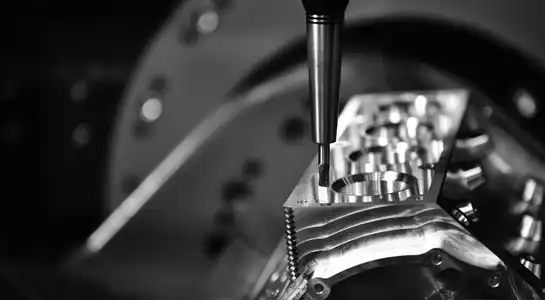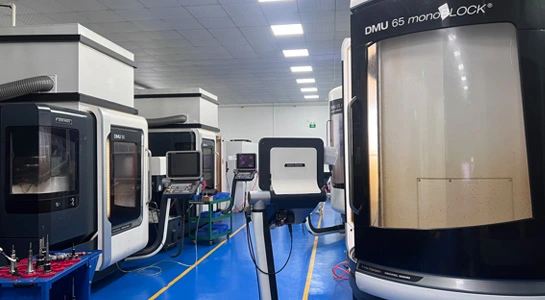The Importance of Manufacturing Validation Builds in Product Development
Defining Manufacturing Validation Builds
Manufacturing validation builds consist of a planned series of production runs executed to rigorously verify that a new or modified product can be consistently manufactured to meet all predefined quality, performance, and regulatory specifications. This phase is a critical bridge between product development and full-scale commercial production. It provides tangible evidence that the design is feasible for manufacturing and that the assembly processes are capable and stable, thereby mitigating significant risks before committing to high-volume output.
Key Objectives of Validation Builds
The primary goals of these manufacturing validation builds are multifaceted. They aim to verify the feasibility and robustness of the product design when produced at scale. Furthermore, they serve to thoroughly assess and validate the manufacturing processes, equipment, and tooling capabilities. A key objective is the proactive identification and resolution of potential quality issues or production bottlenecks. This process also ensures that all activities adhere to necessary regulatory and customer requirements, guaranteeing a compliant launch.
Benefits of Conducting Validation Builds
Implementing comprehensive validation builds offers substantial long-term advantages. It significantly reduces the risk of costly errors, rework, and failures during mass production. This leads to improved overall product quality, reliability, and consistency for the end-user. Consequently, customer satisfaction is enhanced. The process also helps streamline and optimize production operations for greater efficiency, ultimately contributing to a faster and more successful time-to-market for new products.

Types of Manufacturing Validation Builds and Their Significance
Process Validation Builds
Process validation builds are critical for verifying and documenting that the manufacturing processes and equipment are capable of consistently producing a product that meets all predetermined quality and regulatory standards. This phase focuses on challenging the process limits, ensuring equipment reliability under sustained use, and confirming that all operational parameters and control measures are effective and robust. The ultimate goal is to provide a high degree of assurance that the production line is capable of reproducible, commercial-scale manufacturing.
Product Validation Builds
The primary objective of product and manufacturing validation builds is to thoroughly verify that the final assembled product conforms to all its design specifications, user needs, and performance requirements. This stage involves rigorous testing of the product's full functionality, durability, safety, and aesthetic finish under simulated or real-use conditions. It is a crucial step for identifying any discrepancies, latent design flaws, or manufacturing defects that may not have been apparent during earlier prototyping or process checks.
Pre-Production Validation Builds
Pre-production validation builds represent the final, comprehensive rehearsal before launching full-scale manufacturing. These builds utilize the actual production line, trained personnel, and supply chain to manufacture products at or near the intended commercial rate. The key focus is on validating production scalability, assessing supply chain and workforce readiness, finalizing all documentation, and conducting ultimate quality assurance checks to ensure the entire system is prepared for a smooth and successful market launch.
Best Practices for Conducting Successful Manufacturing Validation Builds
Thorough Planning and Preparation
Successful validation builds fundamentally rely on comprehensive planning, which establishes a clear roadmap for the entire process. Key steps involve defining precise objectives and success criteria to guide the effort, along with establishing a detailed validation protocol. It is equally critical to identify all necessary resources, including personnel and specialized equipment, while also allocating sufficient time and budget. This proactive approach ensures that potential risks are mitigated early, and all team members are aligned with the project’s goals from the outset.

Maintaining open and continuous communication among all stakeholders is vital for the success of manufacturing validation builds. Best practices include holding regular status meetings and providing timely updates to keep everyone informed. Documenting and sharing all findings and decisions promotes transparency, while encouraging cross-functional collaboration breaks down silos. Furthermore, establishing clear roles and responsibilities ensures that each team member understands their tasks, which enhances coordination and reduces the likelihood of errors or delays.
Rigorous Data Collection and Analysis
Comprehensive data collection and rigorous analysis are essential for identifying issues and optimizing processes during validation. Key considerations include implementing robust data collection systems to ensure accuracy and consistency. Utilizing statistical process control techniques helps in monitoring process stability, and conducting thorough root cause analysis is necessary for investigating any deviations. Maintaining detailed and organized records of all validation activities also supports traceability and provides valuable evidence for regulatory compliance.
Conclusion
Manufacturing validation builds play a crucial role in ensuring product quality, consistency, and manufacturability. By understanding the different types of validation builds and implementing best practices, manufacturers can minimize risks, optimize production processes, and bring high-quality products to market more efficiently. As the manufacturing landscape continues to evolve, staying up-to-date with validation build techniques and technologies will be essential for maintaining a competitive edge in the industry.
FAQs
1. How long does a typical manufacturing validation build process take?
The duration can vary depending on product complexity and scale, but it typically ranges from a few weeks to several months.
2. Are validation builds necessary for all types of products?
While validation builds are crucial for most products, the extent and complexity may vary based on factors such as regulatory requirements and production volume.
3. How can I ensure the success of my validation builds?
Success depends on thorough planning, effective communication, rigorous data analysis, and collaboration with experienced manufacturing partners.
Expert Manufacturing Validation Build Services | BOEN
At BOEN Prototype, we specialize in providing comprehensive manufacturing validation build services for a wide range of industries. Our experienced team of engineers and technicians can help you optimize your product design, streamline your manufacturing processes, and ensure consistently high-quality production. As a leading supplier and manufacturer in the field, we offer cutting-edge prototyping and low-volume production capabilities in both plastic and metal materials. Contact us at contact@boenrapid.com to learn how we can support your next validation build project.
References
Smith, J. (2022). "The Importance of Validation Builds in Modern Manufacturing." Journal of Production Engineering, 45(3), 112-128.
Johnson, A., & Williams, R. (2021). "Best Practices for Conducting Effective Manufacturing Validation Builds." International Journal of Quality Assurance, 18(2), 67-82.
Brown, M. (2023). "Optimizing Product Development through Strategic Validation Builds." Advanced Manufacturing Technology Review, 7(1), 23-39.
Lee, S., & Chen, H. (2022). "The Role of Validation Builds in Ensuring Regulatory Compliance." Pharmaceutical Engineering Journal, 33(4), 201-215.
Thompson, K. (2021). "Validation Builds: Bridging the Gap Between Design and Production." Product Development and Management Association Journal, 29(3), 145-160.
Garcia, R., & Patel, N. (2023). "Emerging Technologies in Manufacturing Validation: A Comprehensive Review." Journal of Industrial Engineering and Management, 11(2), 78-94.





